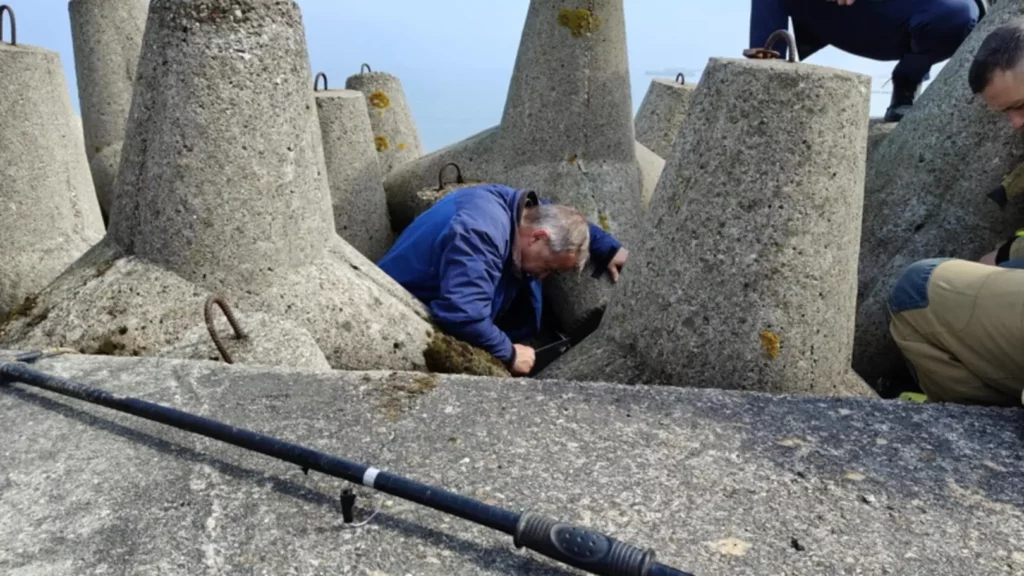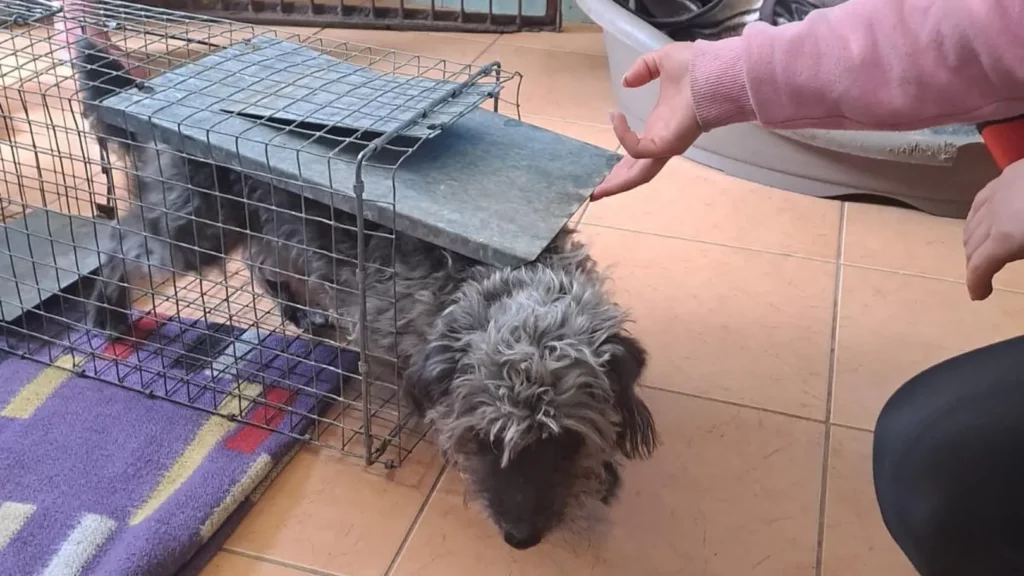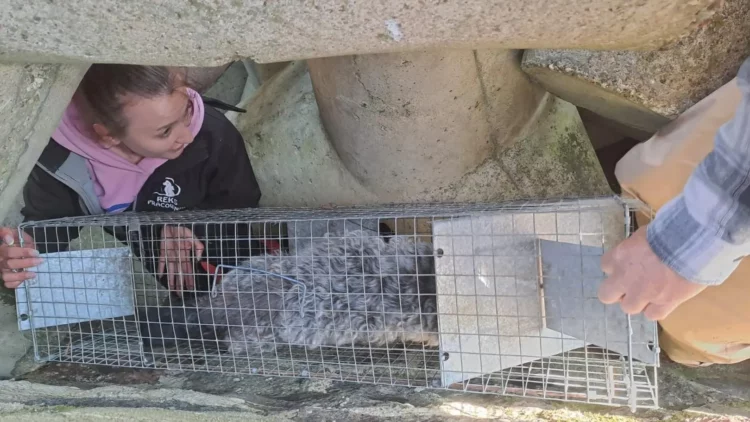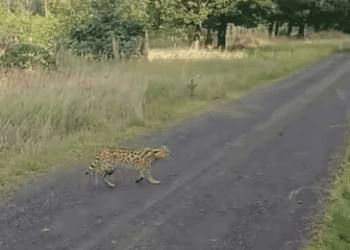A dog trapped for several days under a coastal breakwater in Kołobrzeg, a port city on Poland’s Baltic Sea, was safely rescued following a coordinated operation involving firefighters, police, and animal welfare workers.
The incident began on Sunday, April 20, when a passerby reported hearing persistent barking and whining sounds coming from the tetrapods—massive, interlocking concrete structures designed to absorb the force of waves—located at the end of the city’s eastern breakwater. Local firefighters responded promptly, but initial efforts to locate the animal were unsuccessful.
“We searched extensively, but the dog was moving through a maze of concrete blocks, which made it extremely difficult to locate,” said Damian Romańczuk, a spokesperson for the Kołobrzeg County Fire Service.

The search continued the following day after further reports confirmed the presence of the dog. On Tuesday, an off-duty police officer spotted the animal deep within the structure. Firefighters and staff from the local animal shelter attempted to lure it out using food and capture poles, but the dog was too frightened to emerge.
Authorities then decided to install a live trap, a more passive approach that would allow the dog to enter and be safely enclosed without immediate human contact. By the next morning, officers found the dog inside the trap. Though visibly stressed and slightly dehydrated, the dog was in stable condition and taken to a local animal shelter for evaluation.

“The dog is now under veterinary supervision,” said Arkadiusz Pluciński, head of the Kołobrzeg animal shelter. “We have identified the owner, but we are assessing whether the animal should be returned, given the circumstances of its disappearance and current condition.”
The dog’s entrapment and eventual rescue have drawn national attention, highlighting both the risks posed by coastal infrastructure and the dedication of local emergency services. The breakwater where the dog was found is a popular site for walkers and tourists, but its large concrete formations can also pose hazards for animals that stray too far.
Local authorities are urging pet owners to keep dogs on leashes near coastal areas to prevent similar incidents. “These structures may look harmless, but they are dangerous for animals and even people,” Romańczuk added.

The successful rescue effort was widely praised, with local residents commending the persistent efforts of firefighters, police, and shelter volunteers. While the story has a positive ending, it has also prompted discussions about the need for better signage or preventive measures around such infrastructure, especially in tourist-frequented areas.
As of now, the shelter continues to monitor the dog’s recovery. A final decision on its return to its previous owner will be made based on veterinary assessments and a review of the animal’s home environment.


















